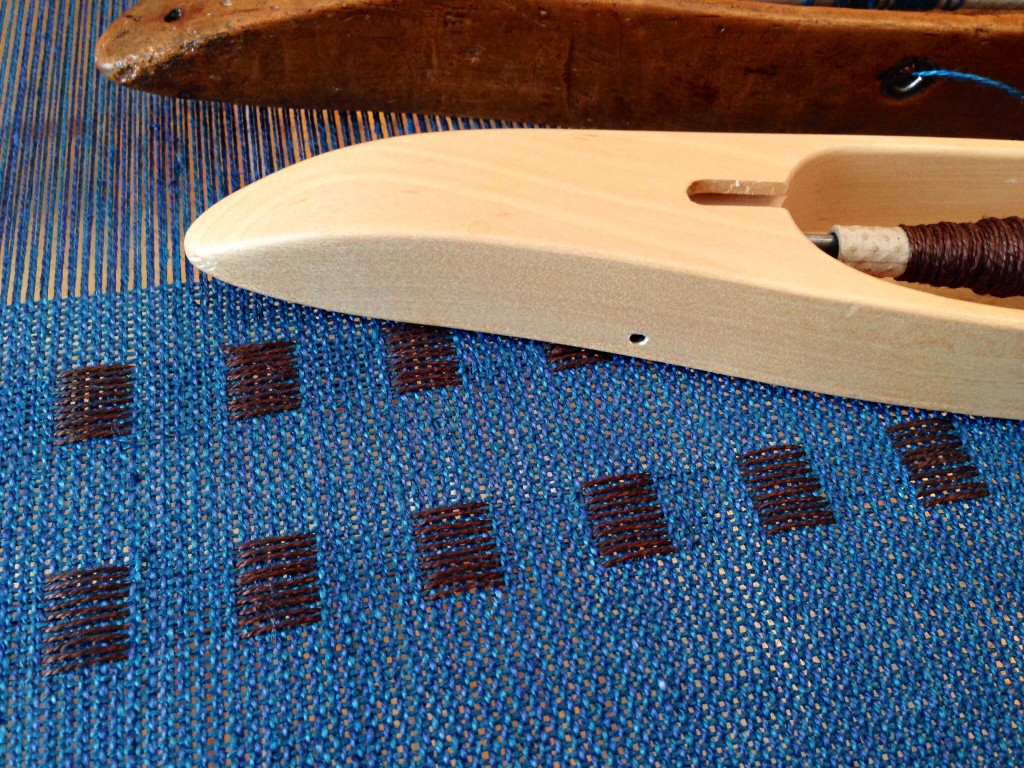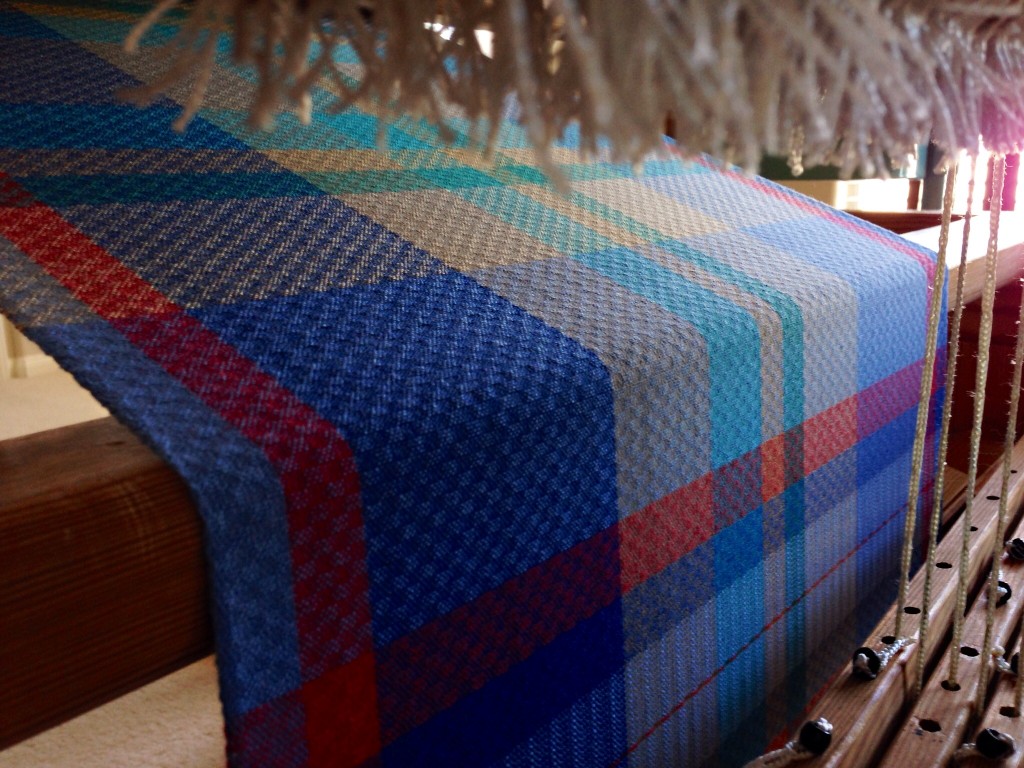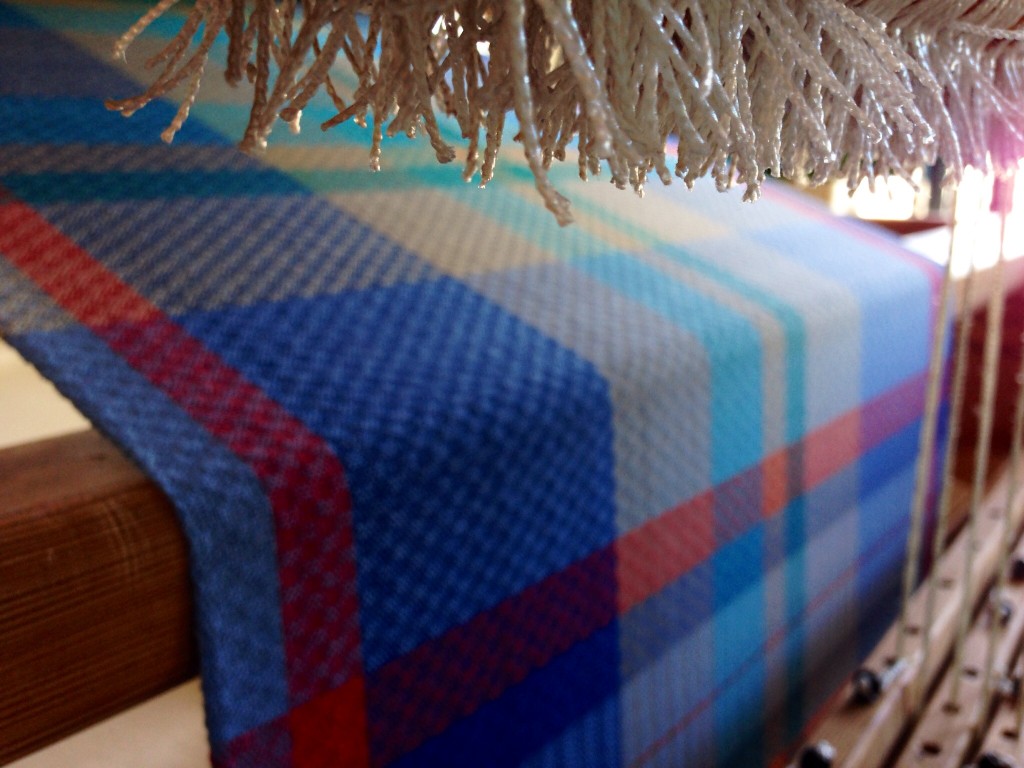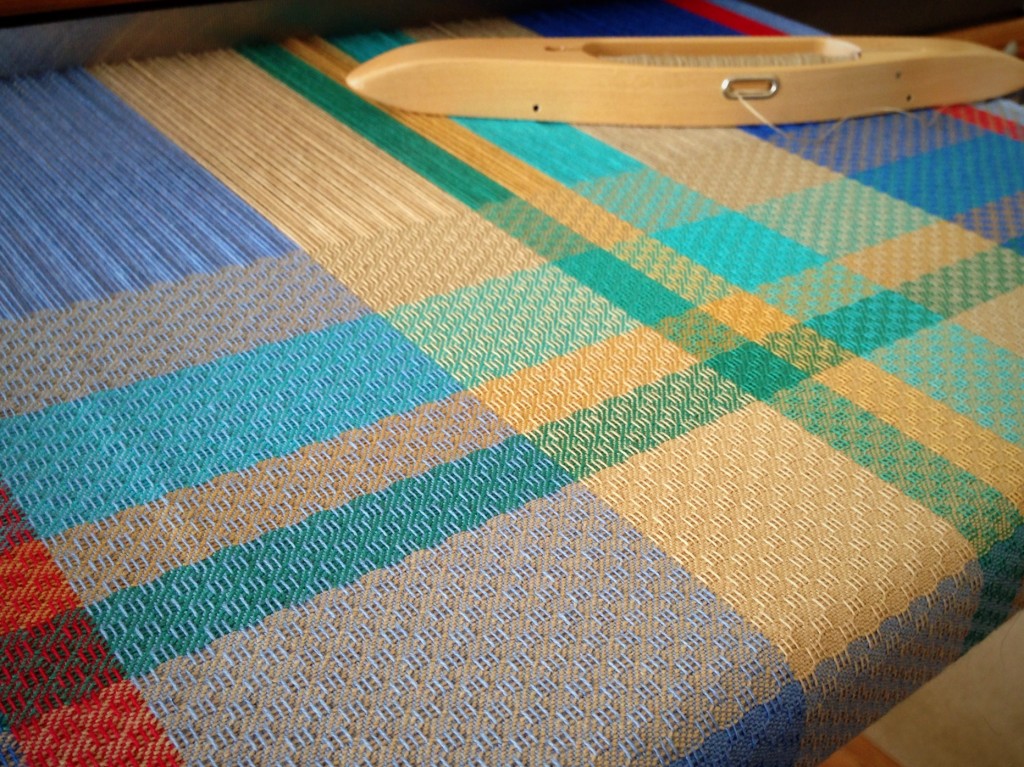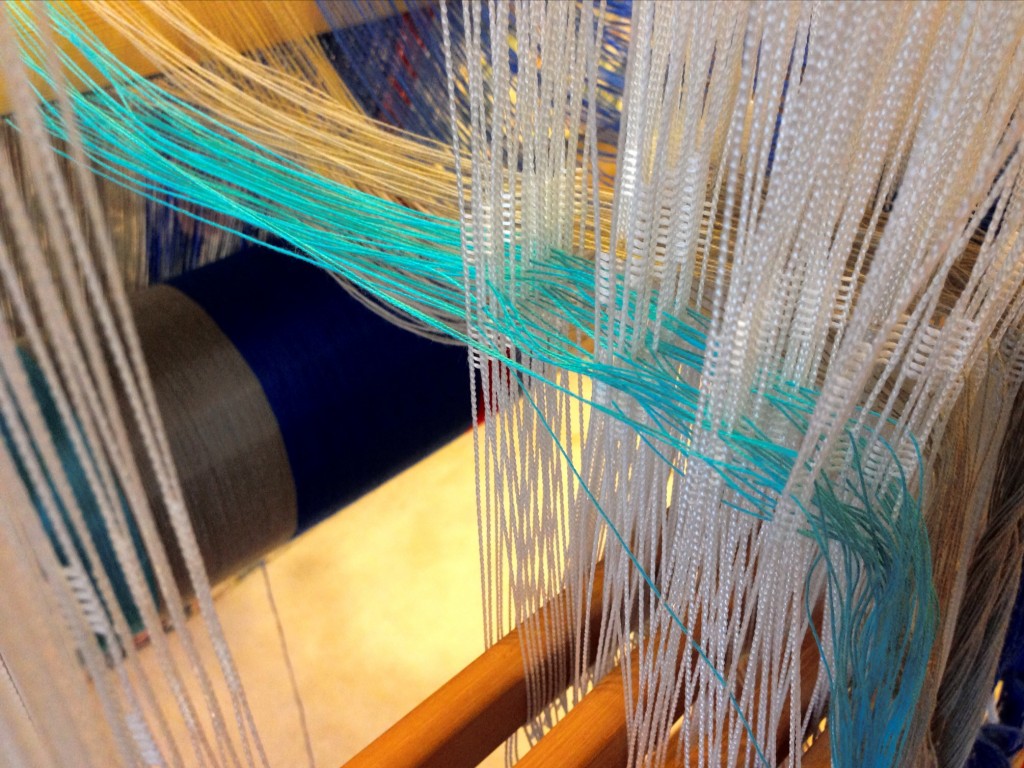Four rugs woven, with hardly enough warp left to weave anything worthwhile. I am eager to cut off the planned and finished rugs, and move on to the next thing. There is only a short span of warp left, so why waste time weaving a runt-sized rug? It won’t hurt to cut it off now. I am not losing that much of the warp.
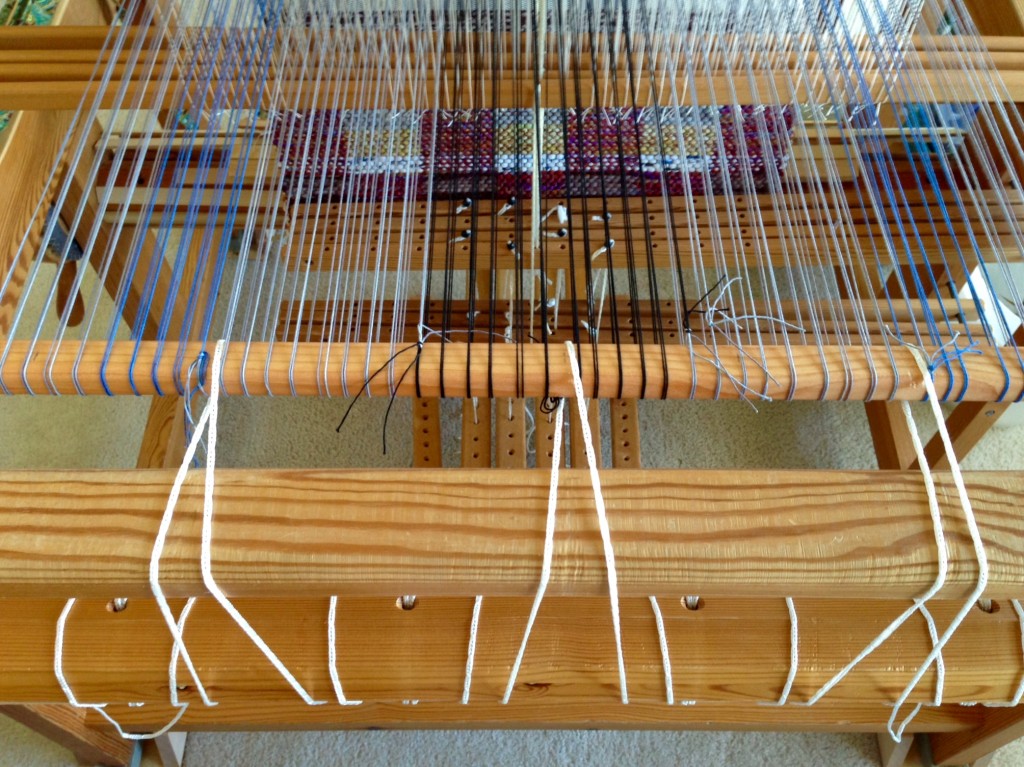
All I have left are scraps–fabric strips that were cut for previous rug designs. …Wait a minute… Could this be an opportunity in disguise? A chance try out another design idea, using fabric strips that are already cut? If I think of this as a welcome challenge, instead of a waste of time, I start seeing everything differently.
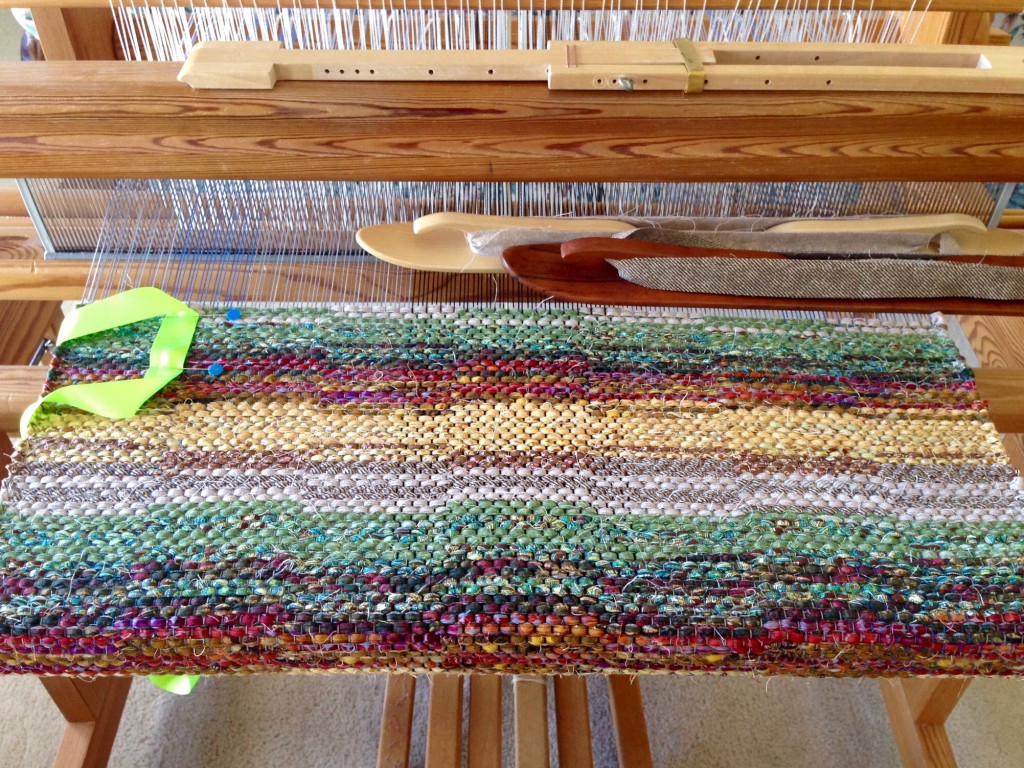
The natural progression of a negative thought goes from bad to worse. Unless something intervenes to stop the progression, it can end in results far worse than cutting off a rug warp too soon. Giving thanks to God breaks the negative progression, and opens us up to an unseen world. A world of beauty and purpose. A place where scraps are used to make new and beautiful things. And where using the rest of the warp is never seen as wasted time.
May your Thanks-giving celebration begin early and continue far beyond the norm.
With gratitude,
Karen

